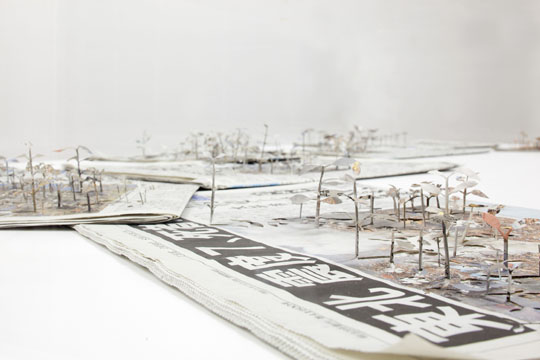Broadly speaking, two types of art have emerged in response to the Great East Japan Earthquake and the ensuing tsunami and nuclear crisis. On the one hand there is art that has been made for the crisis — that is to say, for the benefit of those who were or are suffering from its manifold effects. On the other hand there is art that has been made about the crisis.
Art Tower Mito's "Artists and the Disaster: Documentation in Progress," which is one of the first large-scale shows to attempt a survey of disaster-inspired art, includes both types, though without quite acknowledging the distinction in those terms. This makes it an ambitious but somewhat problematic affair.
Curator Yuu Takehisa adopted a strictly chronological approach to her material. Large curtains hang from the gallery ceilings and divide the exhibits by the month in which they were made. In March, 2011, we are informed, Yuken Teruya, the 39-year-old Okinawan who is now based in New York, was an artist-in-residence in Gunma Prefecture. It was the local daily newspaper that delivered to his country retreat the shocking news of destruction in the northeast, and by the end of the month he had turned those newspapers into a series of artworks.


















With your current subscription plan you can comment on stories. However, before writing your first comment, please create a display name in the Profile section of your subscriber account page.